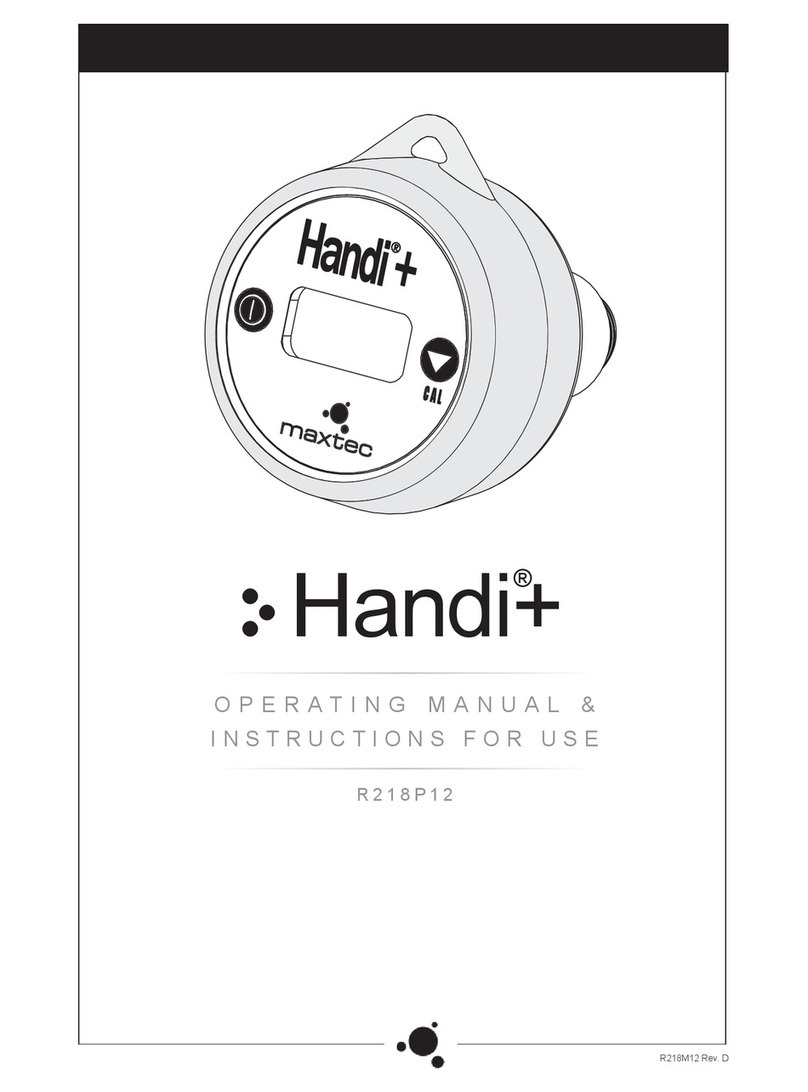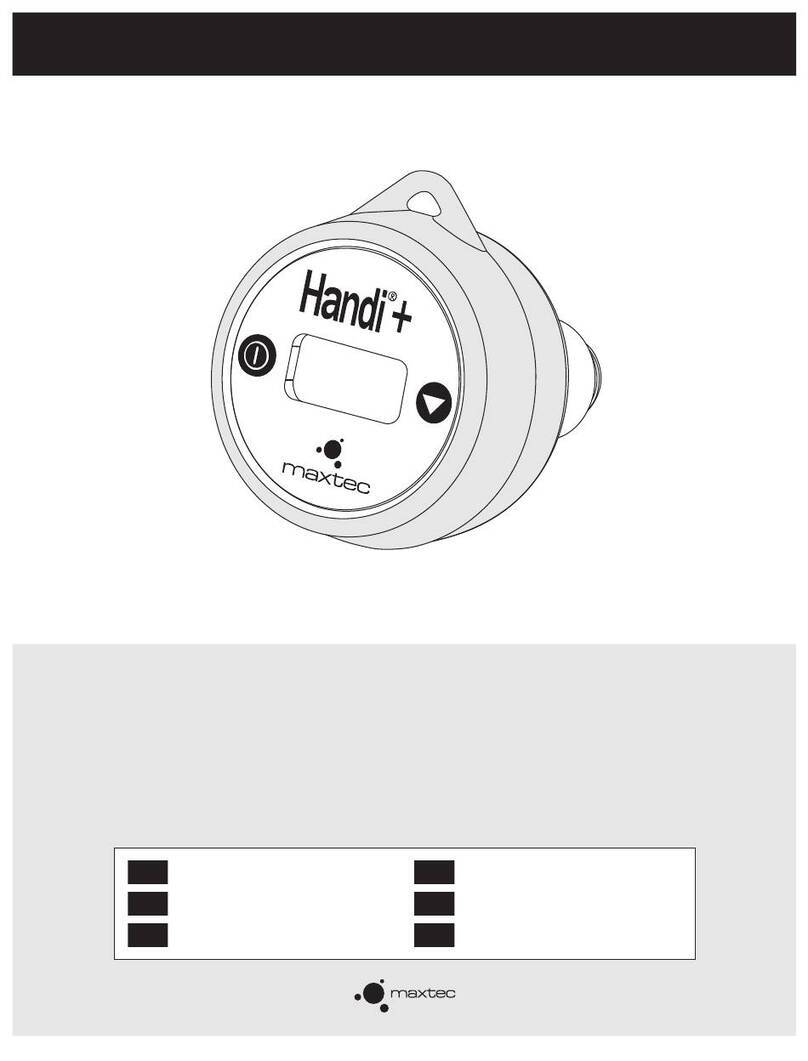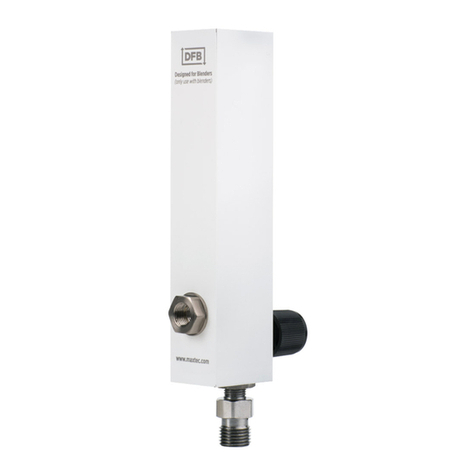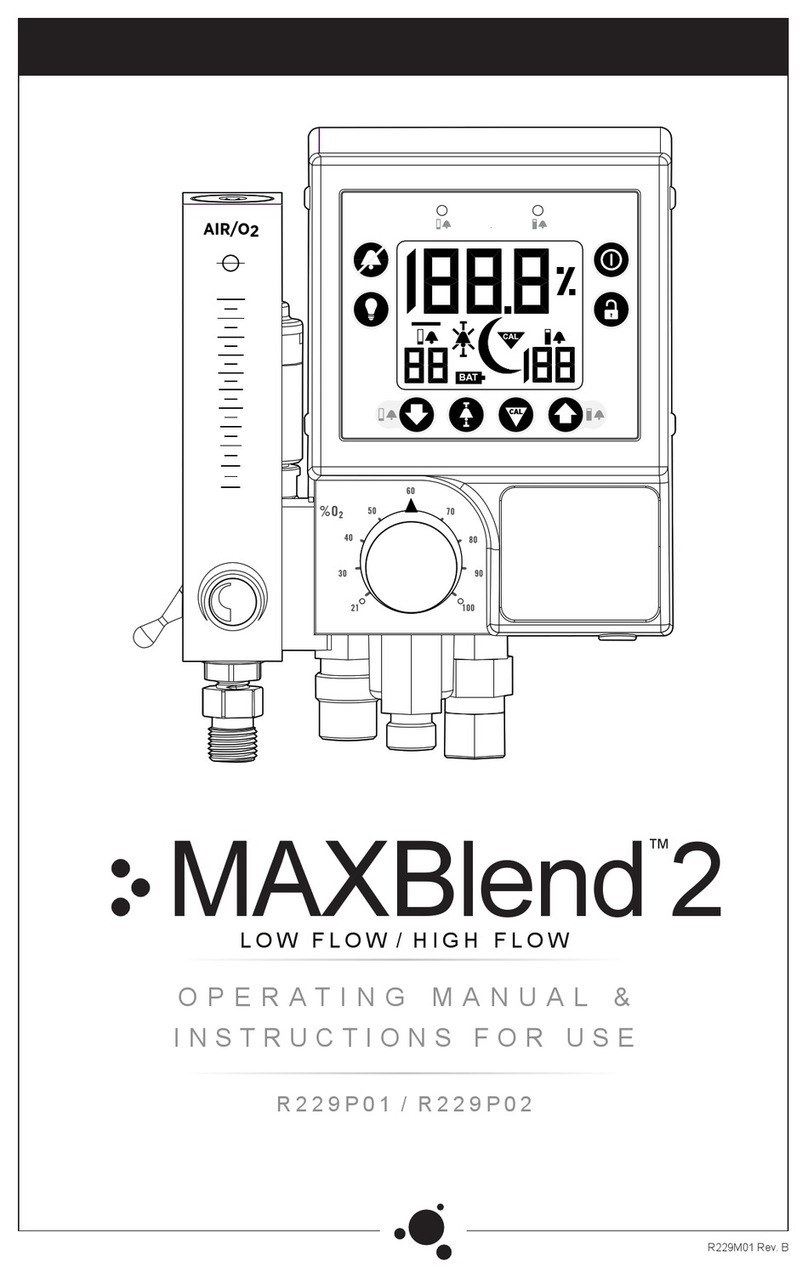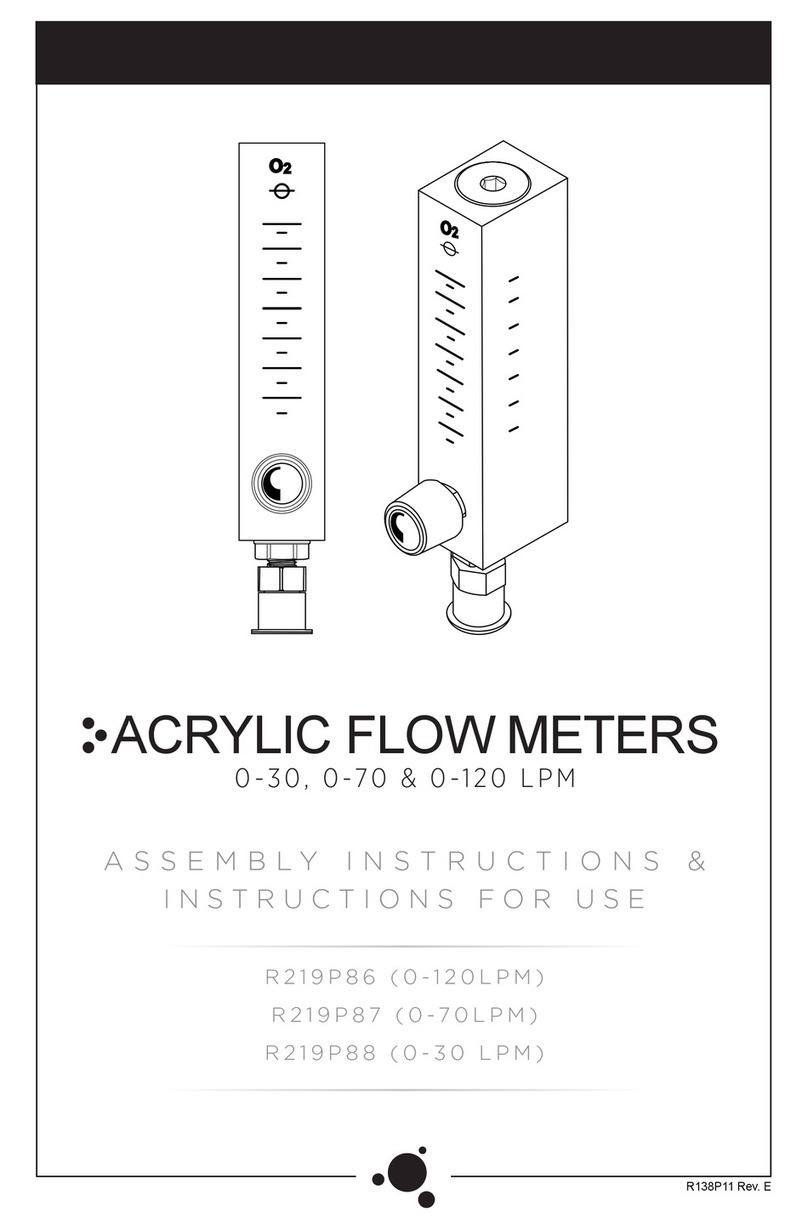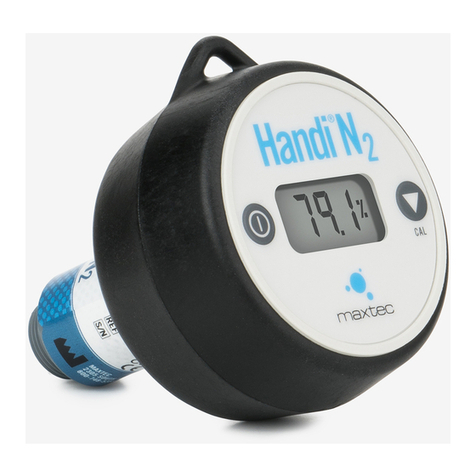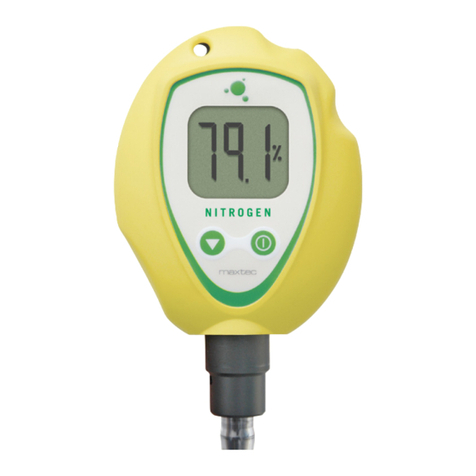
II 866.4.Maxtec www.maxtec.com
WARNINGS
FAILURE TO COMPLY WITH THESE WARNINGS AND CAUTIONS COULD RESULT IN INSTRUMENT
DAMAGE AND POSSIBLY JEOPARDIZE THE WELL BEING OF THE USER.
Indicates a potentially hazardous situation, if not avoided, could result in death or serious injury.
»
Improper use of this device can cause inaccurate oxygen readings which can lead to improper
treatment, hypoxia or hyperoxia. Follow the procedures outlined in this user manual.
»Device specified for dry gas only.
»Before use, all individuals who will be using the MaxN2+ Analyzer must become thoroughly
familiar with the information contained in this Operation Manual. Strict adherence to the operating
instructions is necessary for safe, effective product performance.
This product will perform only as designed if installed and operated in accordance with the
manufacturer’s operating instructions.
»Use only genuine Maxtec accessories and replacement parts. Failure to do so may seriously impair the
analyzer’s performance. Repair of this equipment must be performed by a qualified service technician
experienced in repair of portable hand held equipment.
»Calibrate the MaxN2+ Analyzer weekly when in operation, or if environmental conditions change
significantly. (ie, Elevation, Temperature, Pressure, Humidity — refer to Section 3.0 of this manual).
»Use of the MaxN2+ Analyzernear devices that generate electrical fields may cause erratic readings.
»If the MaxN2+ Analyzer is ever exposed to liquids (from spills or immersion) or to any other physical
abuse, turn the instrument OFF and then ON. This will allow the unit to go through its self test to assure
everything is operating correctly.
»Never autoclave, immerse or expose the MaxN2+Analyzer (including sensor) to high temperatures
(>70°C). Never expose the device to pressure, irradiation vacuum, steam, or chemicals.
»This device does not contain automatic barometric pressure compensation.
»Although the sensor of this device has been tested with various gases including nitrous oxide,
Halothane, Isoflurane, Enflurane, Sevoflurane and Desflurane and found to have acceptably low
interference, the device in entirety (including electronics) is not suitable for use in the presence of a
flammable anesthetic mixture with air or with oxygen or nitrous oxide. Only the threaded sensor face,
flow diverter, and “T” adapter may be allowed to contact such a gas mixture.
»NOT for use with inhalation agents. Operating the device in flammable or explosive atmospheres may
result in fire or explosion.
CAUTION: Indicates a potentially hazardous situation, if not avoided, could result in minor or
moderate injury and property damage.
»Replace the batteries with recongnized high quality AA Alkaline or Lithium batteries.
DO NOT use rechargeable batteries.
»If the unit is going to be stored (not in use for 1 month), we recommend that you remove the
batteries to protect the unit from potential battery leakage.
»The Maxtec MAX-250 oxygen sensor is a sealed device containing a mild acid electrolyte, lead
(Pb), and lead acetate. Lead and lead acetate are hazardous waste constituents and should be
disposed of properly, or returned to Maxtec for proper disposal or recovery.
DO NOT use ethylene oxide sterilization.
DO NOT immerse the sensor in any cleaning solution, autoclave or expose the sensor to high
temperatures.
» Dropping sensor can adversely affect its performance.
»The device will assume a percent oxygen concentration when calibrating. Be sure to apply
100% oxygen, or ambient air concentration to the device during calibration or the device will not
calibrate correctly.
NOTE: This product is latex free.
